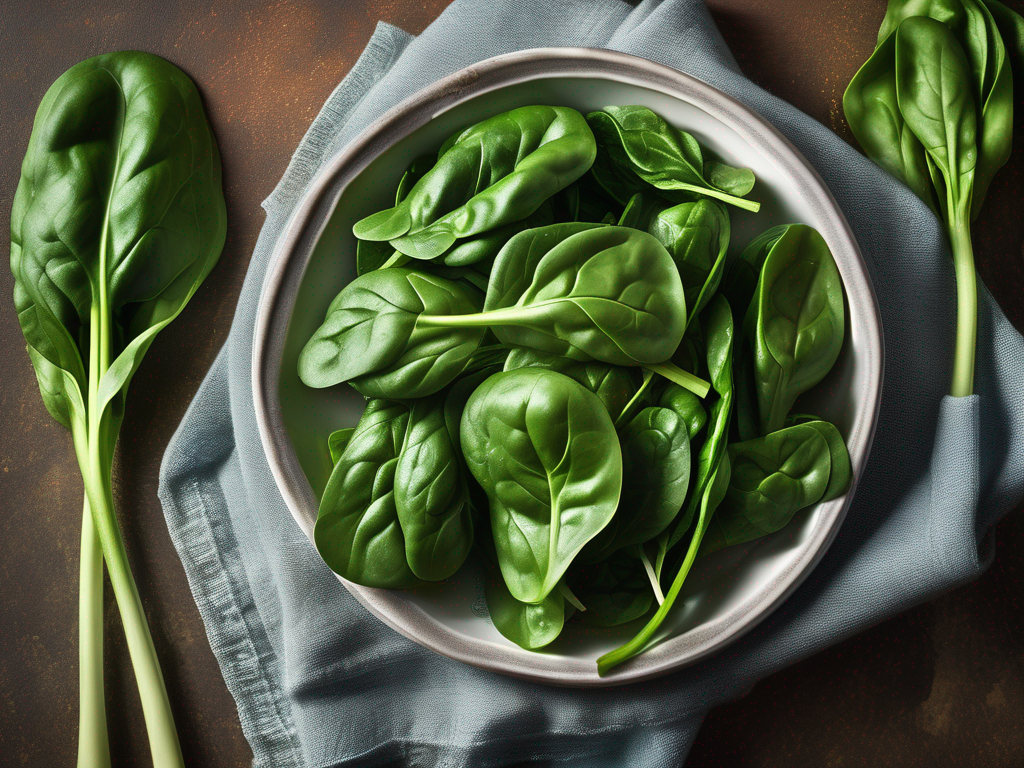
How to Store Fresh Spinach in the Refrigerator to Keep it from Wilting
Get Your Free Food Safety Cheat Sheet
30 most common foods with instant answers. Print it and stick it on your fridge—completely free!
How to Store Fresh Spinach in the Refrigerator to Keep it from Wilting
Fresh spinach is a versatile and nutritious leafy green that can be used in salads, smoothies, soups, and various other dishes. However, one common issue with fresh spinach is that it tends to wilt quickly if not stored properly. In this blog post, we will discuss some practical tips on how to store fresh spinach in the refrigerator to keep it fresh and crisp for longer. (Fresh spinach)
Why Proper Storage Matters
Properly storing fresh spinach is essential to maintain its quality, flavor, and nutritional value. When stored incorrectly, spinach can wilt, become slimy, and lose its vibrant green color. Additionally, improper storage can promote the growth of harmful bacteria, leading to foodborne illnesses. By following the right storage techniques, you can ensure that your fresh spinach stays fresh and safe to eat.
Tips for Storing Fresh Spinach in the Refrigerator
1. Choose the Right Packaging
- Remove Original Packaging: If your fresh spinach comes in a plastic bag or container, remove it as soon as you get home. The original packaging may trap moisture, leading to premature wilting.
- Use airtight containers: Transfer the fresh spinach to a clean, airtight container or a resealable plastic bag. Make sure the container is large enough to accommodate the spinach without crushing it.
2. Prep and Dry the Spinach
- Wash and Dry: Before storing, wash the spinach leaves thoroughly under running water to remove any dirt or debris. Use a salad spinner or paper towels to dry the leaves gently. Excess moisture can accelerate wilting.
3. Optimal Refrigerator Placement
- Temperature and Humidity: Store fresh spinach in the crisper drawer of your refrigerator, where the temperature is slightly cooler and the humidity is higher. Avoid placing it near the vents, as direct airflow can dry out the leaves.
- Avoid Freezing: Do not freeze fresh spinach unless you plan to use it in cooked dishes like soups or stews. Freezing can cause the leaves to become mushy when thawed.
4. Monitoring and Rotation
- Check Regularly: Inspect the spinach regularly for any signs of wilting, yellowing, or sliminess. Remove any spoiled leaves to prevent them from affecting the rest of the batch.
- First In, First Out: Practice the "first in, first out" rule by using up the older spinach leaves before the fresher ones. This helps prevent waste and ensures that you consume the spinach at its peak freshness.
5. Additional Tips for Prolonging Freshness
- Store with a Paper Towel: Placing a dry paper towel in the container with the spinach can help absorb excess moisture and prevent wilting.
- Avoid Moisture: Keep the refrigerator crisper drawer clean and dry to prevent excess moisture buildup, which can lead to spoilage.
- Separate Stems: If your spinach bunch includes stems, consider separating them from the leaves before storing. Stems release moisture, which can cause the leaves to wilt faster.
Conclusion
Properly storing fresh spinach in the refrigerator is key to maintaining its freshness and quality. By following the tips outlined in this blog post, you can extend the shelf life of your fresh spinach and enjoy it in your favorite dishes for longer. Remember to check the spinach regularly, keep it dry, and store it in the optimal conditions to prevent wilting and spoilage. With the right storage techniques, you can savor the crispness and nutrients of fresh spinach every time you use it in your meals. [Fresh spinach](/food/fresh spinach) is a delicious and nutritious ingredient that deserves proper care to preserve its goodness. (Fresh spinach)
Related Posts
Here are some other articles you might find helpful:
Authoritative Food Safety References
These agencies and university labs inform every tip and health precaution we publish.
USDA FoodKeeper – Cold Storage Guidelines
Official refrigerator, freezer, and pantry timelines maintained by the U.S. Department of Agriculture.
Visit USDA FoodKeeperFDA Produce Safety Rule & Grower Guidance
Field-to-fridge handling practices that prevent contamination of fruits, vegetables, and leafy greens.
Visit FDA Produce SafetyCDC Foodborne Illness Prevention Hub
Surveillance-backed guidance on pathogens, symptoms, and steps to reduce foodborne illness risk.
Visit CDC Food SafetyUC Davis Postharvest Technology Center
University research detailing optimal storage atmospheres for produce after harvest.
Visit UC Davis PostharvestPenn State Extension – Home Food Preservation & Safety
Peer-reviewed extension bulletins on safe canning, chilling, and reheating practices.
Visit Penn State ExtensionGet Your Free Food Safety Cheat Sheet
30 most common foods with instant answers. Print it and stick it on your fridge—completely free! Want more? Upgrade to the complete guide with 70+ foods.
Scan your food directly and get instant safety info using our AI-powered camera feature.